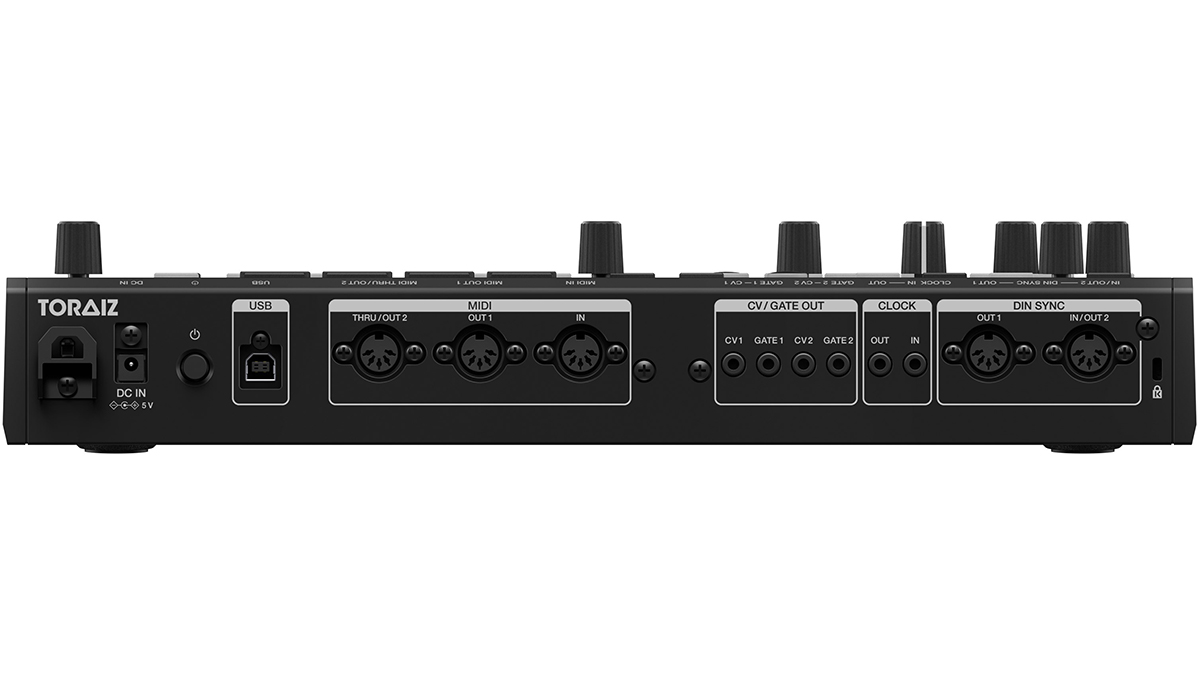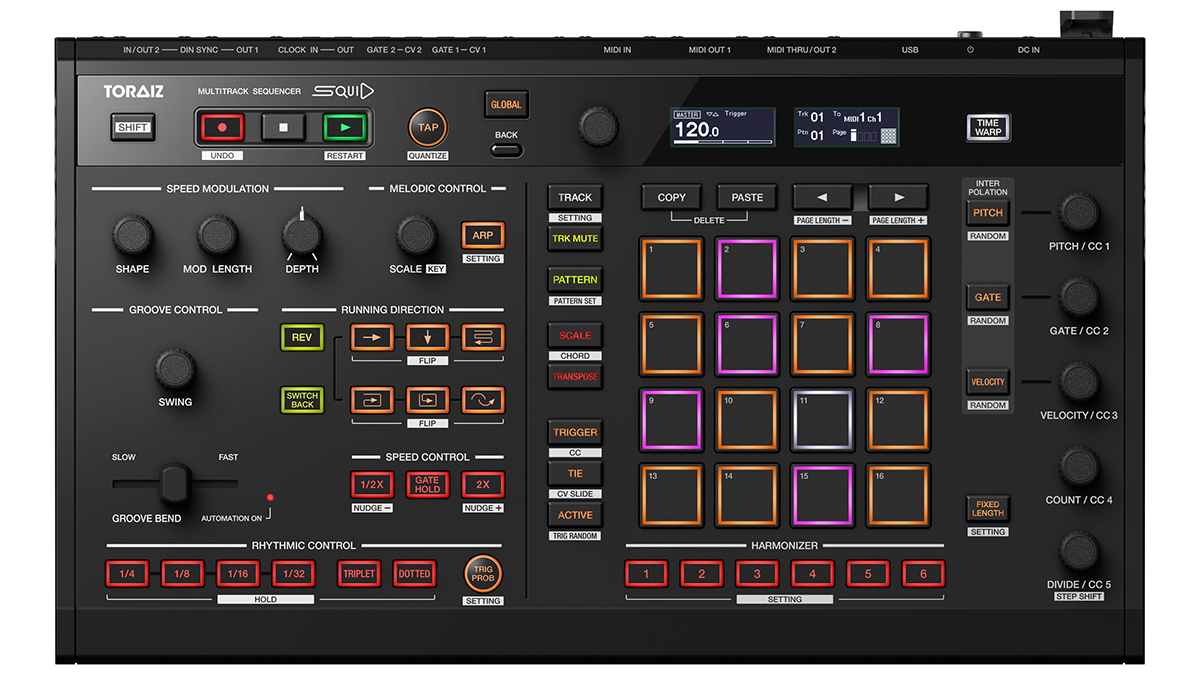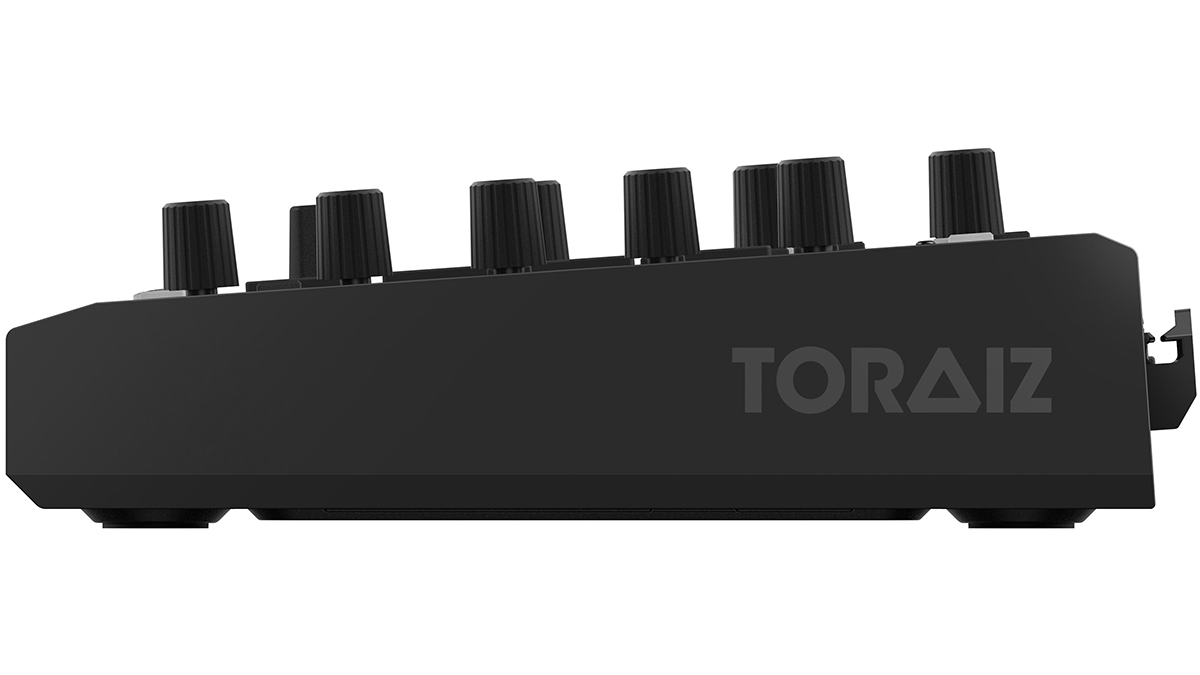MusicRadar Verdict
Pioneer DJ’s new Toraiz Squid sequencer opens the door to a world of bespoke sequencing options, with new features like Groove Bend and speed modulation putting a new spin on your step sequencing moves.
Pros
- +
Responsive, playable pads.
- +
Lots of knobs make the Squid very good for live use.
- +
Many unique paths make it easy to break out of the step-sequencing box.
Cons
- -
A bit pricey given that it has no audio component.
- -
No Pro-DJ sync with Pioneer DJ’s CDJ units.
- -
Groove Bend slider could be a bit more multi-purpose.
MusicRadar's got your back
Aimed at producers, Pioneer DJ’s Toraiz line was started in 2016 with the Dave Smith-filter equipped SP-16 sampler/sequencer, followed by the AS-1 monophonic analog synthesizer in 2017. Now we have a third unit, the new Squid sequencer, which, unlike the SP-16, functions purely as a sequencer for other gear with no audio processing of its own.
The fact that the Squid is purely focused on sequencing means that it’s been engineered and designed clearly for that purpose, and that is felt in the ergonomics of the unit.
The central focus point is the 4x4 grid of pads that are used to input both note and sequence information across 16 tracks. The pads are smaller than those on the SP-16 but still very playable and responsive. They are multicoloured with velocity sensitivity, and serve a range of functions depending on the mode currently selected. Above the pads sits a pair of bright LCD screens, which are crisp and readable from all angles.
The central focus point is the 4x4 grid of pads that are used to input both note and sequence information across 16 tracks.
Recording can be done in either step mode or live mode, in which the pads can be used to play notes, with a maximum of 64 steps in each pattern. There is a scale mode for restricting the notes to any scale you might need, and changing the scale also works on notes already recorded in the sequence, which is handy for coming up with variations live.
Similarly, there’s a live transpose mode and six chord harmonizer buttons at the bottom of the pads, which can be programmed to add user-chosen chords at the push of a button, with 18 chord “sets” that can be saved. There’s also a chord mode that works by assigning chords directly to the 16 pads. Mute mode works as you’d expect, with each pad muting the associated track. There’s also a very handy Randomizer function that can be applied to pitch, gate, velocity, and external CC values as well.

Squid’s in (and out)
The Squid boasts a plethora of connection options. The standard USB jack is complemented by full-size MIDI In, Out and thru jacks, analogue clock connections, two sets of CV/gate outputs, and DIN/SYNC jacks for controlling older Roland gear. Impressive.
One of the great advantages of the Squid is how each track can be set up individually to sequence the output channel and device of your choice. It’s possible to have track 1 controlling a monophonic synth via the MIDI outputs, track 2 controlling a software synth via USB, track 3 controlling a modular synth via the CV and gate outputs, and so on.
Want all the hottest music and gear news, reviews, deals, features and more, direct to your inbox? Sign up here.
Similarly, it’s possible to highly customise the way each track responds - monophonic or polyphonic playback can be assigned, and you can set velocity curves. Scale and arpeggiator settings are stored on a per-track basis as well.
Per-step automation works by going into the trigger page, holding down a step and adjusting values. This workflow is quick and familiar to anyone who has used Elektron’s system of parameter locking.
The Squid has an ‘active mode’, which allows the user to select or de-select which steps are included in the sequence. Deselected steps are skipped over, therefore changing the total sequence length in real time. When working with analogue instruments, there’s also a tie mode and CV slide mode, allowing the user to input these on a per-step basis.
Similar to the beat repeat feature on the MPC, there’s a way to set automatic retriggering of the pads using the Squid’s Rhythmic Control buttons. Again borrowing from the Elektron universe, there’s also a Trig Probability feature, which can be set per track or globally per pattern. It’s also possible to add note repeat functionality directly to either the top or bottom row of the pads, which helps greatly in creative beatmaking.



The Squid also boasts an incredible 48 different running directions for your sequence, which again can be programmed per track. There are the usual forward and reverse options, but there are also zig-zag and clockwise/counter-clockwise options, each with the ability to run start to finish and repeat, or forwards and then backwards.
There’s also a way to modulate the speed of the sequence itself, with six waveform shapes and a depth control. Modulation length is set by number of steps. Instant double and half-speed pitch buttons are available as well, though sadly these don’t latch.
Another unique feature is the Groove Bend slider, which is a spring-loaded crossfader that allows the user to nudge the timing of a track backwards or forwards, as if it was an instrument riding the groove of a band.
Pioneer has considered users who are coming from a DAW background, as the Squid’s workflow boasts several DAW-like features.
First are dedicated copy and paste buttons, as well as 16 levels of undo. There’s also a Time Warp feature that allows the user to save whatever they just played as a new sequence, even if the record button wasn’t on, ensuring that those happy accidents aren’t lost.
Software is also included for managing and importing sequence patterns and MIDI clips, meaning that tracks started in the Squid can be brought into your DAW of choice fairly easily.
An ocean of opportunity
There’s a lot to love about the Squid, especially if you are already the kind of producer who likes to work with a lot of separate machines for sound generation.
One thing to note is that, unlike on the Toraiz SP-16, the Squid doesn’t have Pioneer DJ’s Pro DJ Link connection, which allows for automatic syncing with its CDJ units.
Regardless, the wealth of connectivity and sequencing flexibility means that Pioneer DJ’s new Squid sequencer is surely going to lead you down previously unexplored paths, with no limits to where your sequence ends up. At $599 USD, we’re sure we’ll be seeing the Squid in more than a few setups soon.
